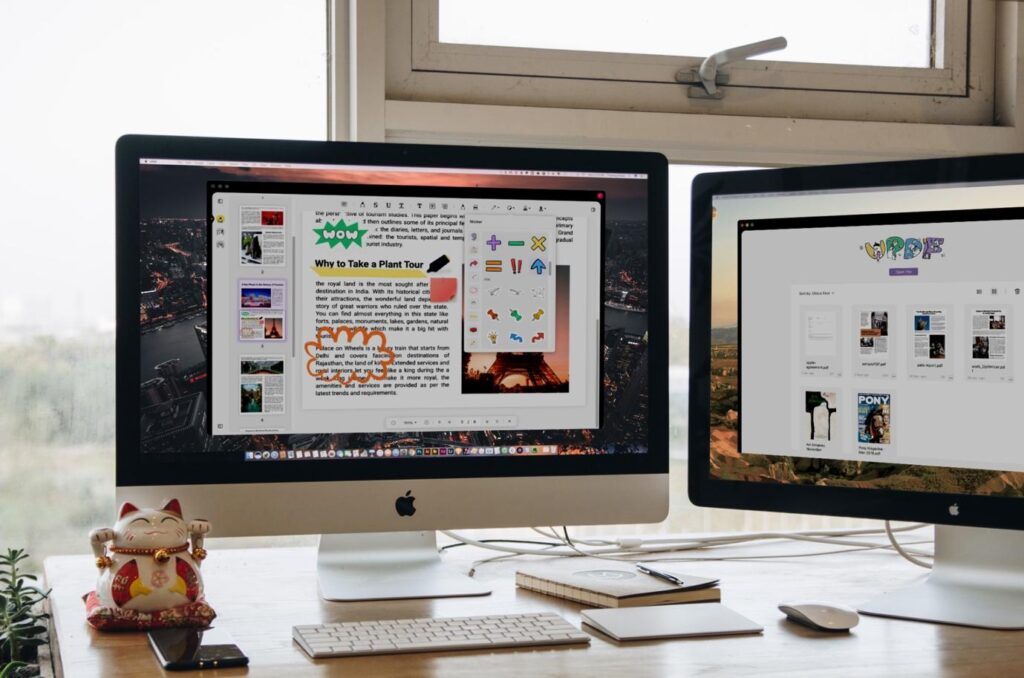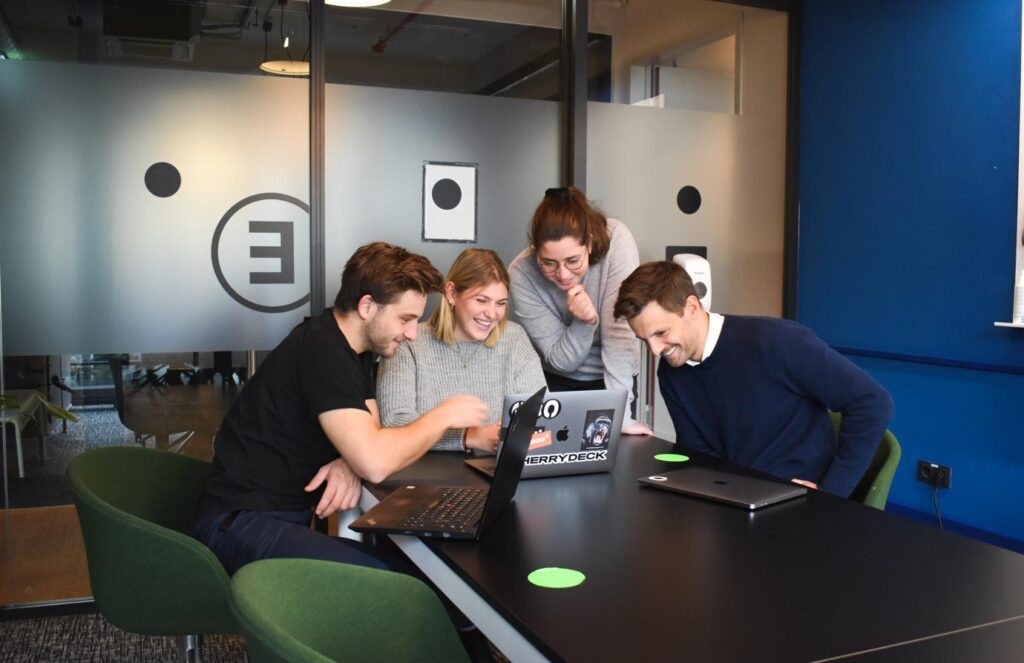Employee productivity is a common concern for managers and company owners. If you can double the number of “engaged employees,” according to Gallup, your company’s income will increase by 147 percent. According to Forbes, engaged employees are 27 percent more likely to receive “excellent” performance evaluations than those who are not.
1. Using UPDF to make digital reading faster and more effective

This is an obvious choice. You can’t expect your employees to be as productive if you don’t provide them with the right tools. Regardless of whether or not your employees are physically located in the same place, using collaboration and productivity tools makes it easier for them to work together effectively. They can help teams work more easily with digital documents such as digital signatures, modifying contracts or digital reading. In this group are tools for managing tasks, like UPDF.
On any of your devices, you may edit PDFs using UPDF, a free and open-source PDF editor. UPDF, in a nutshell, gives your PDF document a life of its own. When working with PDF files, you won’t encounter any limits, adverts, or nag screens asking for your subscriptions. It’s crucial to point out that while UPDF runs on all of the major operating systems, including Windows, Mac, iOS, and Android, its functionality differs somewhat between the Windows and Mac versions.
Using UPDF, you or your team can boost productivity because it is an all-in-one solution for all PDF editing.
Features
- Compatible with macOS, Android, and iOS devices, and Windows will come soon.
- Easy to view, annotate and sign PDF files
- You can edit the text in your PDF file
- Helps you edit images anywhere in your PDF file
- Allows you to manage pages such as reorder, insert, extract and delete pages from PDFs.
2. Manage your schedule

It doesn’t matter if you have a personal assistant who takes care of your schedule or not.
It’s your job to group work, set aside time for meetings, and make sure you have enough time set aside to do routine activities that necessitate your undivided attention.
It can be done at the conclusion of the week for the next week or the night before your work week begins. This may seem time-consuming or even difficult, but it will pay off in the long run.
Using this one productivity trick alone can save you hours of procrastination and drive you to prioritize and plan your objectives.
It’s easy to schedule time in your diary (online or on paper) when you know what you want to do and when you need to do it.
3. Make productive to-do lists

While many have them, others write them down and then promptly forget about them. We’ve all now heard of them. However, how helpful is YOUR own personal to-do list?
A weekly to-do list that you can cross off as you complete each item is a piece of cake when your projects are broken down into specific goals and objectives, all of which have their own deadlines attached to them.
Most of us have a lot going on, so if your “Urgent” and “Essential” items fill up your to-do list every day, it’s time to re-evaluate your calendar.
Once we’ve added something to our to-do list, many of us assume we’ve already completed it since we’ve put it down in writing. Make a separate list for each task and then give up on them all. One method to be more productive and more focused lies between these two extremes.
4. Get more out of meetings

The issue of the two-hour meeting that might have been avoided by sending an email is something that each of us is familiar with. Meetings that don’t have a purpose are the worst time wasters in the office. It’s, therefore, possible to enhance productivity by reducing back on meetings.
Consider whether you can deliver the same information by email, phone call, short video chat, or one of the collaborative tools I listed above before scheduling a meeting. If so, then do so. Schedule the meeting if it is really necessary.
Create a meeting agenda and follow it religiously. Following the agenda and beginning and terminating on time will greatly decrease the amount of time that is wasted. Allow plenty of time for debate and questions so that everyone has an opportunity to speak out.
5. Remove distraction

It’s human nature to be side tracked from time to time. However, if your working efficiency is being negatively affected by distractions, that’s an issue. According to CareerBuilder, 52 percent of managers said that cell phones were the top productivity killers at work. Office gossip and social media spread like wildfire, with the internet and social media not far after.
Distractions such as these can be minimized if they are causing productivity issues. It’s possible to limit non-work talks to a few minutes in the break room, for example, by requiring mobile phones to remain in “silent” mode at all times in the workplace.
Make sure you don’t go overboard. Otherwise your employees may feel like they’re being treated like toddlers and lose their enthusiasm. The key is not to remove every conceivable source of confusion but to establish clear, reasonable, and fair rules.
6. Take breaks

Anyone who works eight to ten hours a day at full capacity will be fatigued. Taking pauses is important, and I’ll say it again: important. Taking a break is really essential. The most productive workday consists of 60 minutes of continuous work followed by a 10-minute break. You’ll also be able to focus better throughout the day if you work out every day.
Spend 10 minutes stretching each time you get up from your desk, or 30 minutes at the end of the day. It doesn’t matter how much time you have. When we exercise, we not only benefit physically but mentally as well, since it gives our brains a chance to digest what we’ve done and how.
Conclusion
Increasing the productivity of your company’s employees is essential if you want it to grow. All employees will benefit from an increase in productivity that lowers stress and increases revenue. No doubt, all of the above-mentioned ways are important to boost productivity.
 Imagup General Magazine 2024
Imagup General Magazine 2024



